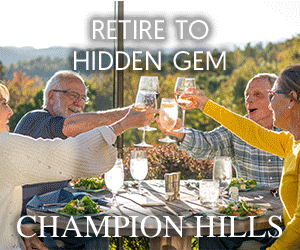 Triangle Golf Today editor’s bag now sporting “world’s finest forged irons”
Triangle Golf Today editor’s bag now sporting “world’s finest forged irons”
By DAVID DROSCHAK
When Golf Etc owner Joel Iacovelli informed me an average wedge lasts about 40 rounds before the grooves start diminishing I cringed.
Why such a reaction?
Well, believe it or not, I’ve been playing the same irons for 26 years. That’s correct … more than a quarter century. How I’ve been able to maintain a 9 handicap all these years I’ll never know.
No, I am not cheap. Yes, I am sentimental, but that doesn’t come into play here either. My set of MacGregor DX by Nicklaus irons, which I guess would now be labeled as “vintage,” were a wedding present from my ex wife, so there is no real attachment there. I think the entire set cost $189 in 1988.
Having never taken a golf lesson in my life as a self-taught former caddie at the local country club, I have just been too scared to make a switch, even fully aware that my ball spin was disappearing and my clubs were starting to look a little ragged around the edges.
Heck, I even used to chase around those guys driving the yellow school buses filled with barrels of mismatched clubs when I would snap one of my DX irons at the bottom of the shaft and couldn’t find the head. I once looked for 30 minutes on a hole at Governors Club trying to find the head of my 5-iron. Never did find it.
Those buses have disappeared and now so have my old set of irons (Not really, they are still sitting in my garage until I get around posting them in Craigslist).
When Iacovelli first opened his golf store in Cary near Prestonwood Country Club three years ago I asked him about any unique or special items he had in stock. The conversation quickly turned to Miura irons, a premium line of clubs founded in 1957 by Japanese club maker Katsuhiro Miura.
“The feel is really awesome and when the ball comes off it doesn’t feel like something you hit every day,” Iacovelli said. “The reason I carry these clubs is simple….it is a customized golf club that not everybody sells, which I believe is important in a golf store that is not a chain store that offers customized services.”
Iacovelli is one of just two suppliers of the hand-crafted irons in the Triangle, and back then I suggested I needed to try them to see how special they really were. I took a peak, nodded and was on my way without ever grabbing a feel.
Three years later, I got the idea for a first-person story about switching irons after all these years and talk about Miura resurfaced.
If I was going to take the plunge, why not dive off the high board, why not make a big splash?
So, in early September I made my way to Iacovelli’s store for not only some new shiny irons but for an analysis and fitting. My club speed, smash factor and all those neat numbers displayed on the Doppler launch monitor rival those players on the PGA Tour, yet at 54 years old I have no illusions of where my game is going.
But when I picked up the new limited edition Series 1957 Cavity Back irons from Miura my attitude suddenly changed.
Then I put them into action for real. One evening I made my way out to Devils Ridge County Club in Holly Springs, hoping to play nine holes with my new Miura irons. I didn’t know what to expect so I made the trip solo.
I grabbed a cart and went to the first hole without any practice. This would be the true test. Could I jump out of the car, without warming up, and get results.
A 377-yard opening hole was the perfect opportunity to hit a Miura 4-iron. I’m here to tell you I’m a new man … and I expect a new golfer. The ball took off like a feather, didn’t waver in the air and was laced 200 yards down the middle of the fairway. My second shot with a 7-iron was a repeat performance to the center of the green.
I can honestly attest that it was the first moment in quite some time in my ultra busy schedule that I was thrilled to play again, and excited to see if I can lower my handicap this fall.
I can’t remember the last time I returned home and cleaned my DX irons. On this occasion I spit shined my new Miura clubs.
“When you get into the amount of relief on the heel and toe, that’s what the good players look at,” Iacovelli said. “When you produce clubs for the masses most manufacturers go with the average of what everybody liked the most. So Mr. Miura was sought after for his ability to grind and shape the golf club, also how he stamped the club 12 times, the necks are welded on, they are not actually one piece, producing a much stronger bond. All the club hosels are absolutely 100 percent straight and centered, and you don’t always find that with other mass-produced golf clubs.”
Miura irons typically run $265-$300 per club, and Iacovelli has been ranked No. 2 in the Golf Etc chain in terms of selling the high-end Japanese clubs.
“People who purchase Miura clubs are not your kid in college or a retired guy on a fixed income, but it is avid golfers who are in business and have expendable income. It’s a matter of this being a very nice, well made product that attracts low handicap players. They truly are special.”
Maybe that’s where my game is headed now that I have Miura irons in my bag.
















